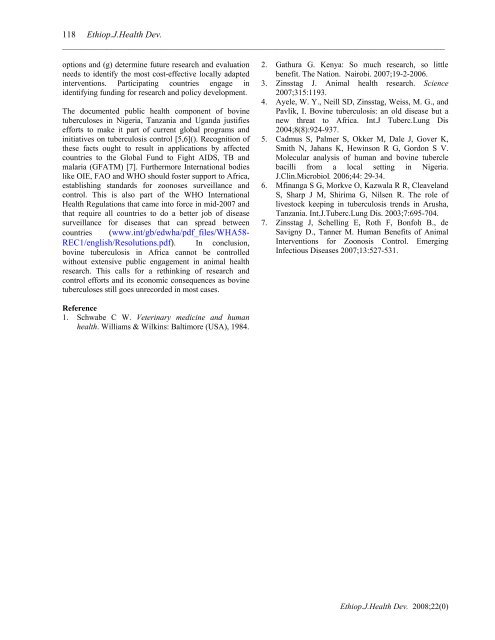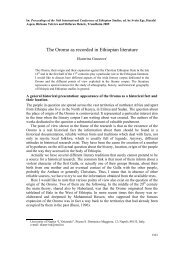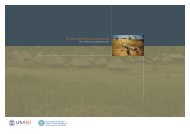Create successful ePaper yourself
Turn your PDF publications into a flip-book with our unique Google optimized e-Paper software.
118 Ethiop.J.Health Dev.<br />
______________________________________________________________________________________<br />
options and (g) determine future research and evaluation<br />
needs to identify the most cost-effective locally adapted<br />
interventions. Participating countries engage in<br />
identifying funding for research and policy development.<br />
The documented public health component of bovine<br />
tuberculoses in Nigeria, Tanzania and Uganda justifies<br />
efforts to make it part of current global programs and<br />
initiatives on tuberculosis control [5,6](). Recognition of<br />
these facts ought to result in applications by affected<br />
countries to the Global Fund to Fight AIDS, TB and<br />
malaria (GFATM) [7]. Furthermore International bodies<br />
like OIE, FAO and WHO should foster support to Africa,<br />
establishing standards for zoonoses surveillance and<br />
control. This is also part of the WHO International<br />
Health Regulations that came into force in mid-2007 and<br />
that require all countries to do a better job of disease<br />
surveillance for diseases that can spread between<br />
countries (www.int/gb/edwha/pdf_files/WHA58-<br />
REC1/english/Resolutions.pdf). In conclusion,<br />
bovine tuberculosis in Africa cannot be controlled<br />
without extensive public engagement in animal health<br />
research. This calls for a rethinking of research and<br />
control efforts and its economic consequences as bovine<br />
tuberculoses still goes unrecorded in most cases.<br />
Reference<br />
1. Schwabe C W. Veterinary medicine and human<br />
health. Williams & Wilkins: Baltimore (USA), 1984.<br />
2. Gathura G. Kenya: So much research, so little<br />
benefit. The Nation. Nairobi. 2007;19-2-2006.<br />
3. Zinsstag J. Animal health research. Science<br />
2007;315:1193.<br />
4. Ayele, W. Y., Neill SD, Zinsstag, Weiss, M. G., and<br />
Pavlik, I. <strong>Bovine</strong> tuberculosis: an old disease but a<br />
new threat to Africa. Int.J Tuberc.Lung Dis<br />
2004;8(8):924-937.<br />
5. Cadmus S, Palmer S, Okker M, Dale J, Gover K,<br />
Smith N, Jahans K, Hewinson R G, Gordon S V.<br />
Molecular analysis of human and bovine tubercle<br />
bacilli from a local setting in Nigeria.<br />
J.Clin.Microbiol. 2006;44: 29-34.<br />
6. Mfinanga S G, Morkve O, Kazwala R R, Cleaveland<br />
S, Sharp J M, Shirima G, Nilsen R. The role of<br />
livestock keeping in tuberculosis trends in Arusha,<br />
Tanzania. Int.J.Tuberc.Lung Dis. 2003;7:695-704.<br />
7. Zinsstag J, Schelling E, Roth F, Bonfoh B., de<br />
Savigny D., Tanner M. Human Benefits of Animal<br />
Interventions for Zoonosis Control. Emerging<br />
Infectious Diseases 2007;13:527-531.<br />
Ethiop.J.Health Dev. <strong>2008</strong>;22(0)







